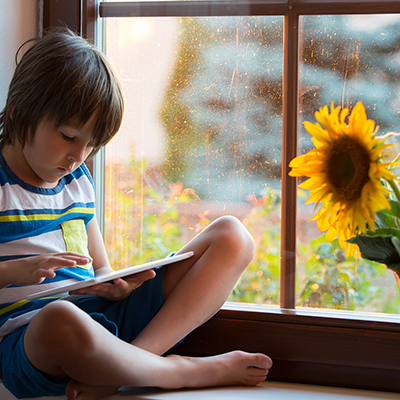How to Save Energy
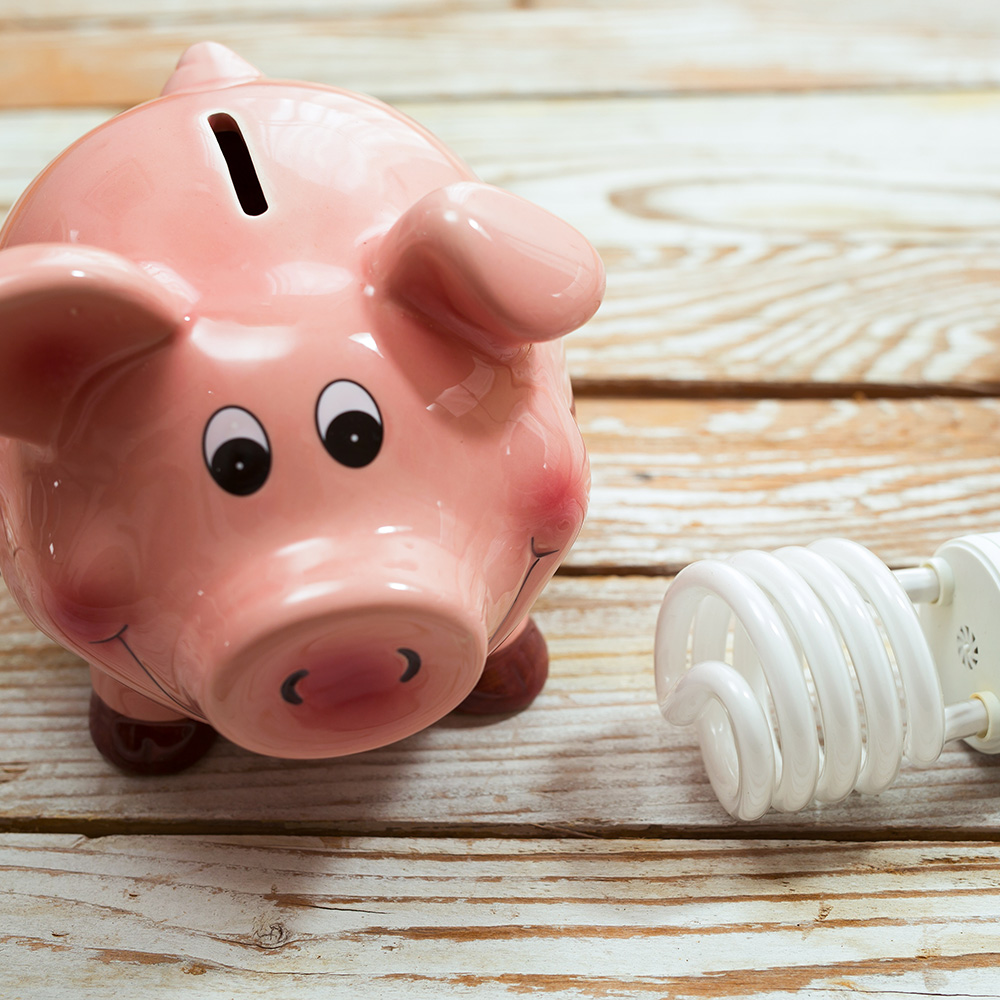
Last updated September 7, 2023
Gas and electricity account for a large portion of your annual utility bill, but the energy that powers your home is also costly to the environment. Most scientists agree that the greenhouse gases that result from burning fossil fuels to produce energy contribute to climate change. But it’s easy to reduce both your utility costs and your carbon footprint with a few simple fixes.
If your home-sweet-home has a not-so-sweet annual energy bill, this guide will help you start saving some green by going greener at home.
Difficulty:
Intermediate
Duration:
Over 1 day
Table of Contents
Update Your Light Bulbs
Turn Off Switches
Do Full Loads
Be Smart About Temperature
Check Your Water Heater
Look for Energy Efficient Appliances
Update Your Light Bulbs
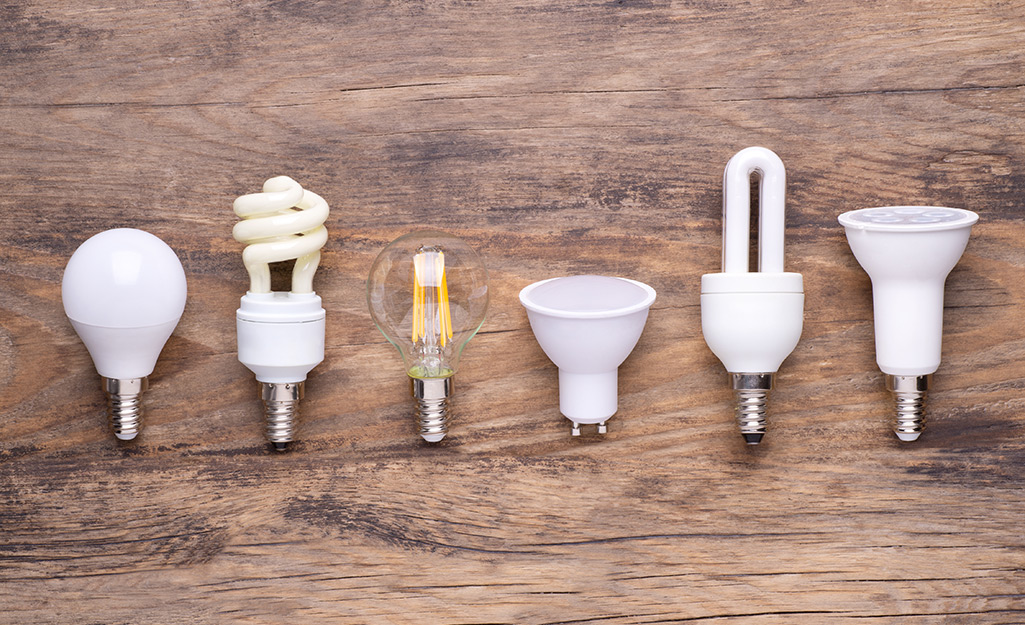
The lighting in your home accounts for around 30 percent of your electric bill. One of the easiest ways to reduce your energy usage is to swap out every incandescent bulb in your home with an energy efficient light bulb. Here’s a look at how much energy the four main types of light bulbs use.
- Incandescent bulb: Ninety percent of the energy consumed by an incandescent light bulb is released in heat—only 10 percent of its energy consumption results in light. While incandescent light bulbs are very inexpensive, they only last for 1,000 hours.
- Halogen incandescent bulb: Halogen bulbs use the same technology as a conventional incandescent bulb, and although they’re somewhat more efficient than standard bulbs, halogen bulbs burn even hotter than incandescents.
- CFL bulb: A compact fluorescent light, or CFL, is an energy efficient light bulb that uses the same technology as traditional fluorescent lights, except the tiny tubes are twisted into the shape of a light bulb and fixed onto a base that fits a standard light socket. The average annual energy cost of a CFL bulb is lower than both halogen and incandescent bulbs, and it has a lifespan of 10,000 hours.
- LED bulb: The light emitting diode, or LED bulb, is the clear winner when it comes to reducing your electric bill. An LED bulb burns cool and uses 75 percent less energy than an incandescent bulb, and has an impressive lifespan of 25,000 hours.
- While LEDs are more expensive than incandescent bulbs, over 20 years, the average energy cost of using an incandescent bulb is around six times higher than that of an LED bulb.
Tip: Consider a smart lighting system, which enables you to program lighting schedules, change the color of the light bulbs, and control your lights remotely on your device.
Turn Off Switches
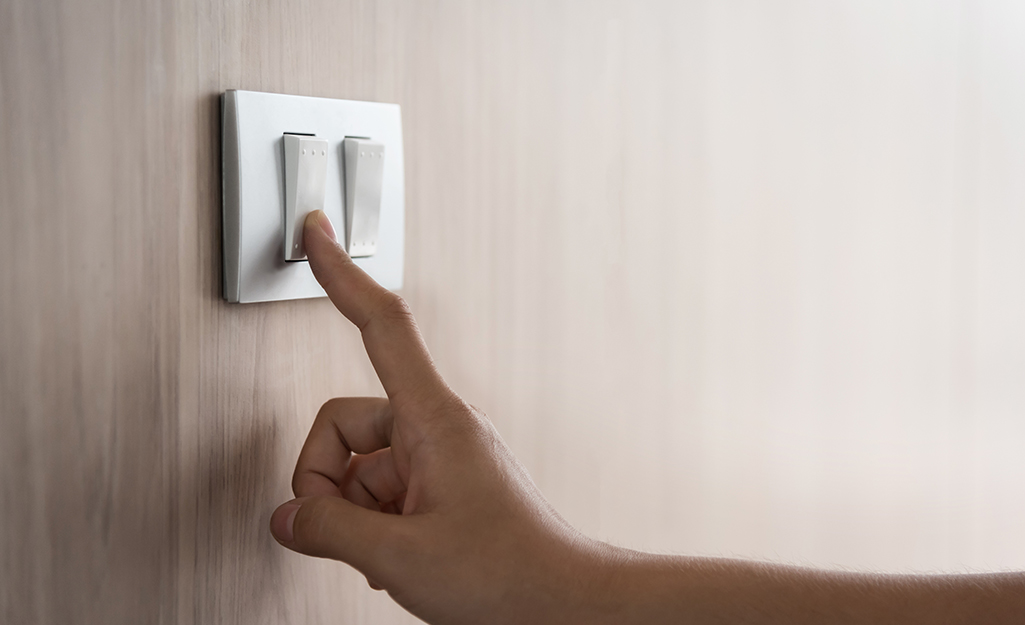
Depending on the type of light bulb you use in your fixtures, switching off your lights when you’re not using them will help reduce your electric bill. But every flick of the switch reduces the bulb’s lifespan, so how much you save depends on the type of light bulb you use.
Here’s when you should turn off each bulb type to reduce energy usage and extend the life of your bulbs:
- Incandescent bulb and halogen bulb: These bulbs use the most energy and emit the most heat, so you’ll save the most energy and money by turning them off whenever you’re not using them—especially in the summer.
- CFL bulb: The lifespan of a CFL bulb is heavily impacted by turning it on and off frequently. Since CFL bulbs are so efficient, leave the lights on if you’re going to be out of the room for less than about 15 minutes, but turn them off if you’ll be gone longer.
- LED bulb: Turning LED lights on and off doesn’t affect the lifespan of an LED bulb, and these lights use so little energy that leaving them on won’t affect your energy bill by much. This makes an LED bulb ideal for the porch light and other lights you leave on for long periods of time.
The lighting in your home isn’t the only thing you should switch off when you aren’t using it. All of your appliances and electronic gadgets continually draw electricity—even when they’re turned off or in standby power mode. The energy consumption associated with standby or sleep mode accounts for between five and 10 percent of your energy bill.
To improve your home’s energy efficiency, plug your appliances and devices into a smart power strip, which automatically cuts the power to a specific device when the device goes into standby power mode. The other items plugged into the strip stay on until they, too, enter sleep mode.
Do Full Loads
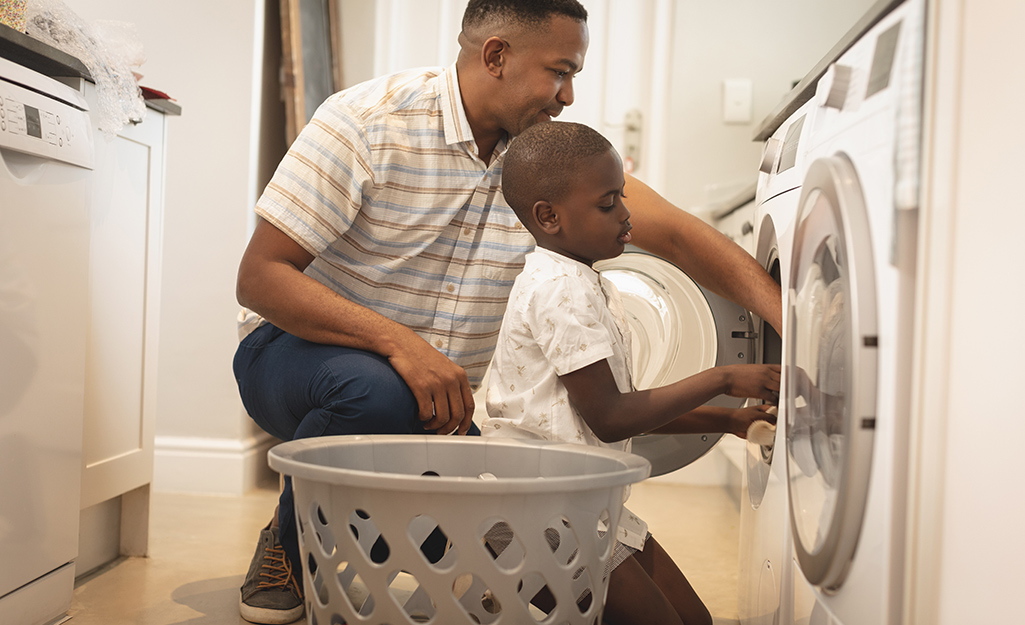
The two most energy-consuming chores you do at home are washing the dishes and doing the laundry. In addition to the energy cost of operating the machine, you also pay for the hot water you use.
Since the amount of energy you use to operate the washing machine, dryer and dishwasher is the same whether you do a full load or a partial load, always washing full loads will reduce your water and electricity usage and lower your energy bill.
Here are some additional energy saving tips for doing laundry and dishes:
- Wash in cold water to cut a load’s energy consumption in half.
- Use the shortest wash cycle for clothes and dishes that aren’t heavily soiled.
- Use the high-speed spin cycle to remove more water from your clothes.
- Hang your laundry to dry when you can to avoid turning on the dryer.
- Use dryer balls instead of dryer sheets to keep clothes separated, reduce static and shorten drying time.
- Let the dryer’s moisture sensor detect when the load is dry so it’ll shut off automatically.
- Skip rinsing the dishes before loading them, and you’ll save up to 2.5 gallon of water per minute.
- Skip the heated drying cycle, and open the door to let the dishes air dry instead.
Be Smart About Temperature
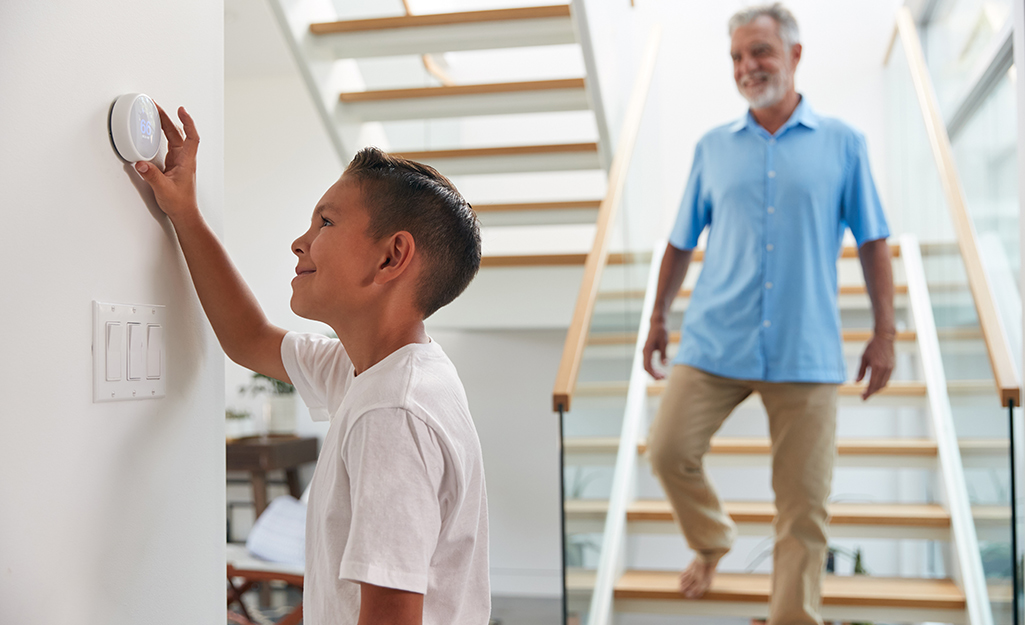
Heating and cooling your home accounts for more than 40 percent of your energy bill—which may be a shocking sight some months, especially if you live in a region that experiences heat waves and cold snaps or that commonly has very hot temperatures in summer (95 degrees Fahrenheit or above) or very cold temperatures in the winter (5 degrees Fahrenheit or below).
Since the energy consumption required to keep the heater or air conditioner running all season long is a major source of greenhouse gases, it’s important to be smart about temperature in your home.
To lower your carbon footprint and your annual energy cost, the U.S. Department of Energy recommends setting your thermostat no higher than 68 degrees Fahrenheit in the winter and no lower than 72 degrees in the summer.
But you don’t have to sacrifice comfort for the sake of energy conservation. Here’s how to save energy and money during the heating and cooling seasons while staying warm in winter and cool in summer.
- Install a programmable thermostat to lower your heating and cooling bills. A programmable thermostat enables you to set different temperatures for different times of the day, depending on whether you’re at home, away from home or asleep.
- Try a smart thermostat, which is like a programmable thermostat, except a smart thermostat connects to Wi-Fi, and you can control it from your device, no matter where you are.
- Hire a professional HVAC contractor to inspect and tune up your furnace (or heat pump) and air conditioner at the start of each heating or cooling season to keep it running efficiently.
- Use an energy-efficient space heater to keep a chilly room warm without turning up the thermostat.
- Use a portable fan or ceiling fan to cool you off in the heat. Turn off your fans when you leave the room to save energy.
- In the winter, reverse the direction of your ceiling fan blades. They’ll push the warm air gathered near the ceiling downward to keep you more comfortable without turning up the thermostat.
Check your HVAC air filter every couple of months, and replace it with a high-quality filter at least every 90 days.
Check Your Water Heater
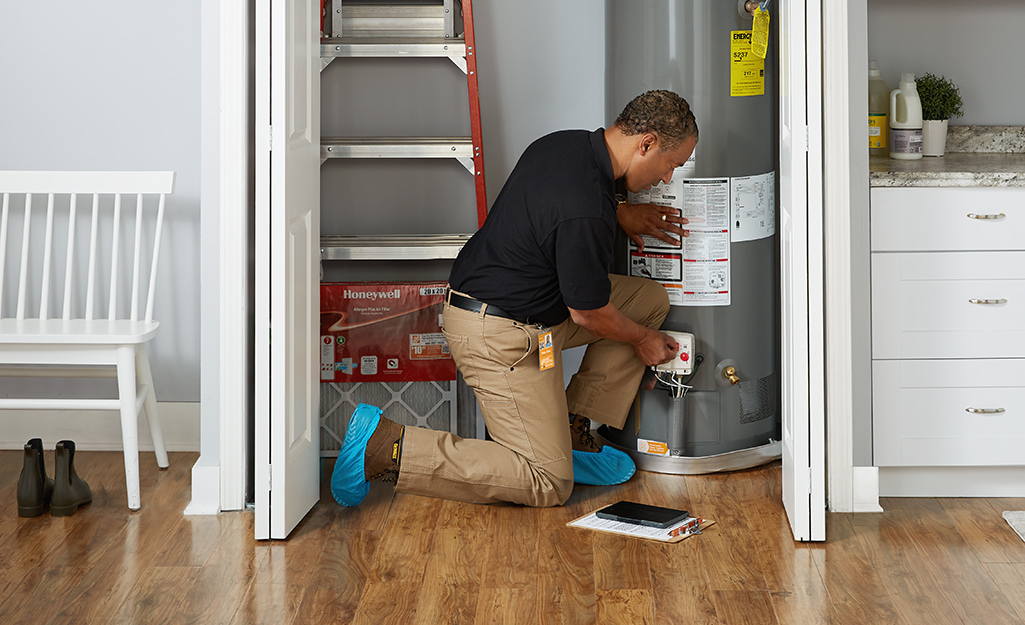
Heating water for your home accounts for roughly 17 percent of your annual energy bill. Proper water heater maintenance goes a long way toward lowering your energy consumption and water heating costs. Just as your air conditioner and heating systems need regular maintenance to stay efficient, your standard water heater requires attention each year to keep the hot water flowing at a lower energy cost.
DIY water heater maintenance is fairly simple, and you can do it yourself if you’re comfortable performing these related tasks:
- Shut off the unit’s heat source, and relight the pilot if it’s a gas model.
- Shut off the cold water supply to the heater, and turn it back on.
- Check the pressure relief valve, and replace it if necessary.
- Drain the tank with a hose or bucket, and remove sediments from the bottom.
To improve your water heater’s energy efficiency:
- Use foam pipe insulation to insulate the cold and hot water pipes that come out of the top of the heater.
- Lower the temperature of your water heater to 120 degrees Fahrenheit to reduce its energy consumption.
- Install a water heater insulating jacket around the tank to prevent heat loss.
Look for Energy Efficient Appliances

When it’s time to replace a home appliance, your best bet for long-term energy savings is to choose the most efficient model you can afford. ENERGY STAR® certified appliances meet strict standards for efficiency, but in general, any new appliance will likely be more efficient than the one it’s replacing.
The less energy an appliance uses, the larger the up-front investment, but you’ll typically recoup the extra cost—and then some—over its lifetime.
Tip: Many appliances will last 10 years or longer, but as new energy-efficient technologies emerge, even a five-year-old appliance may be outdated and costing you more than a newer model.
Insulate and Weatherize

The roof, walls, windows and doors that make up your home are major sources of air leaks, which can lead to sky-high energy bills during the hottest and coldest times of the year.
Depending on where and how much your home is losing air, weatherizing your home may be very simple. Air-sealing your home is a two-part process.
The first part is sealing air leaks, which are commonly found around:
- Windows and exterior doors
- Baseboards on exterior walls
- Outlets and switches on exterior walls
- Recessed lighting fixtures
- Pipe and service entrances
A home energy assessment can help you identify areas in your home that need air sealing. To stop air leaks:
- Use caulk to seal along baseboards and recessed fixtures, and around window and door frames.
- Use weatherstripping and door sweeps to seal the moveable parts of windows and doors.
- Use spray foam to seal large gaps around vents and pipe entrances. This type of foam expands to fill gaps and cracks, eliminating air flow from outside into the room.
The second part of weatherization is assessing your home’s insulation. Adding insulation can be a simple DIY job depending on where you need it. In some cases, you may need to rent specialized equipment to blow loose-fill insulation into a hard-to-reach wall cavity.
Our handy insulation calculator will help you figure out how much insulation you need for your project.
Blown-in or loosefill fiberglass insulation is blown or sprayed into place with an insulation blowing machine. It fills the areas between ceiling joists and existing wall studs. It is typically used for attics, floors, walls, ceilings, hard-to-reach and oddly-shaped areas. It can even be installed directly over existing insulation for added protection.
Blown-in insulation's main value/RTB is energy savings. This type of insulation also provides sound control because it absorbs noise.
Spray foam insulation can be sprayed into gaps inside or outside to seal and insulate cracks from 1 inch to 3 inches. Because it expands to take the shape of the void it fills, it forms a long-lasting, durable, airtight and water-resistant bond that eliminates unwanted airflow. Use to prevent energy loss around rim joists, sill plates, plumbing, HVAC/ductwork, electrical penetrations, electrical outlets and base boards. Outside, you can use spray foam insulation to protect gas line penetrations and outside water faucets, repel and deflect water and keep moisture out of seals. It can also create a barrier and keep out unwanted pests from insulated areas.
Fireblock insulation spray foam helps keep fire and smoke from spreading to other parts of the house and seals electrical wires running through wall studs.
Replace Your Windows

If weatherization isn’t enough to stop the flow of hot and cold air through old, leaky windows, replacing them sooner than later will save you a lot of money in the long run. According to the Department of Energy, heat loss and heat gain through windows account for 25 to 30 percent of a home’s heating and cooling bill. Inefficient windows also result in more wear and tear on your HVAC system, which has to work harder to compensate.
While installing new, energy-efficient windows is a considerable investment, it will pay off in a much lower energy bill.
Energy efficient windows come in numerous styles and various levels of protection against the outside elements. The right replacement window type for your home depends on your climate, your existing window types and whether you want a special feature like a low-emissivity (low-e) coating.
In addition to your usual weatherizing, tackle these tasks to improve the energy efficiency of your new or existing windows:
- If a window has a corresponding storm window, check that it’s properly installed, and use it during hot or cold spells. If it’s a retractable storm window, keep it closed against the heat and cold.
- Add a solar film to windows that get direct sunlight.
- Install exterior shutters or awnings to help shield the windows from wind and direct sunlight.
- In the summer, close the shades on windows directly hit by the sun to keep heat out. Open the shades on windows not hit by direct sunlight to let in natural light, so you can shut off the switches.
- In the winter, do the opposite—let the sun’s rays into your rooms, but keep the other shades closed to help prevent heat loss.
Reducing the amount of energy you use at home can save you money and reduce your impact on the environment. It’s not hard to beef up your home’s energy efficiency with easy DIY projects like replacing inefficient light bulbs, installing a programmable thermostat and increasing insulation. The Home Depot has everything you need to lower your home energy consumption. We have options to deliver online orders when and where you need them.



